During Implementation, Legal Entities will be set up for your Organization and tied to their respective Locations within R365. However, if a change in ownership occurs or there is a shift in Legal Entity structure, existing Legal Entities may need to be adjusted or deactivated.
If you are uncertain about whether you need to change your Legal Entity setup, contact your Coach or Customer Success Manager for further guidance.
Steps to Create a New Legal Entity
To create a new legal entity, follow these steps:
Click steps to expand for additional information and images.
1) Create a New Due To/From Account for the New Legal Entity.
Open the Create menu, under Accounting, select Account.
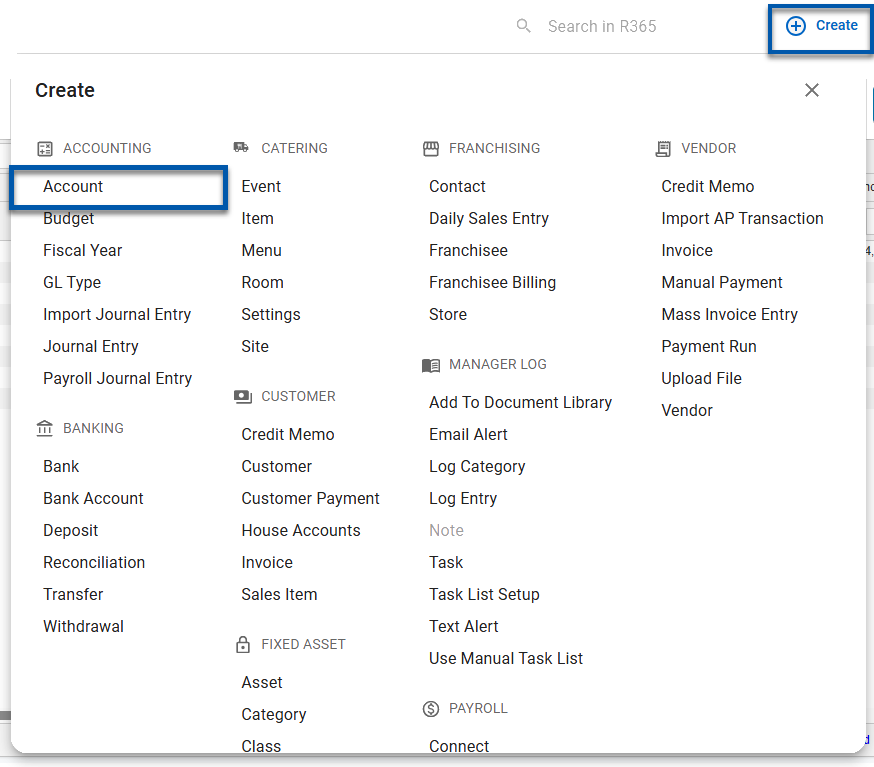
This will open a new GL Account record where this Due To/From Account can be entered. Ensure that this new record is saved when completed.

2) Create a New Legal Entity.
In the Admin application, expand the System category, then click Setup Assistant.
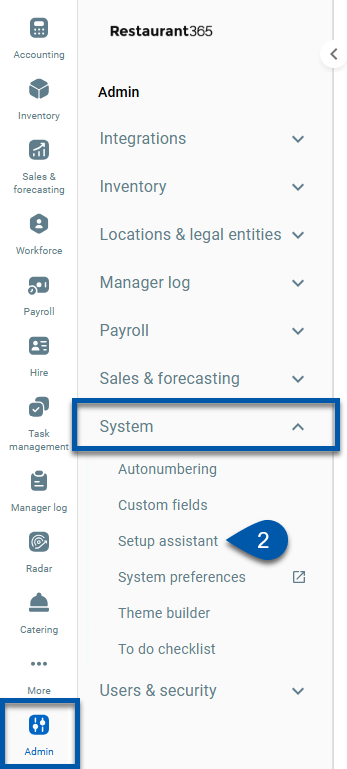
Under Organization click Legal Entities to view a listing of all Legal Entities. To create a new one, click the Add Legal Entity button and enter in the necessary details.
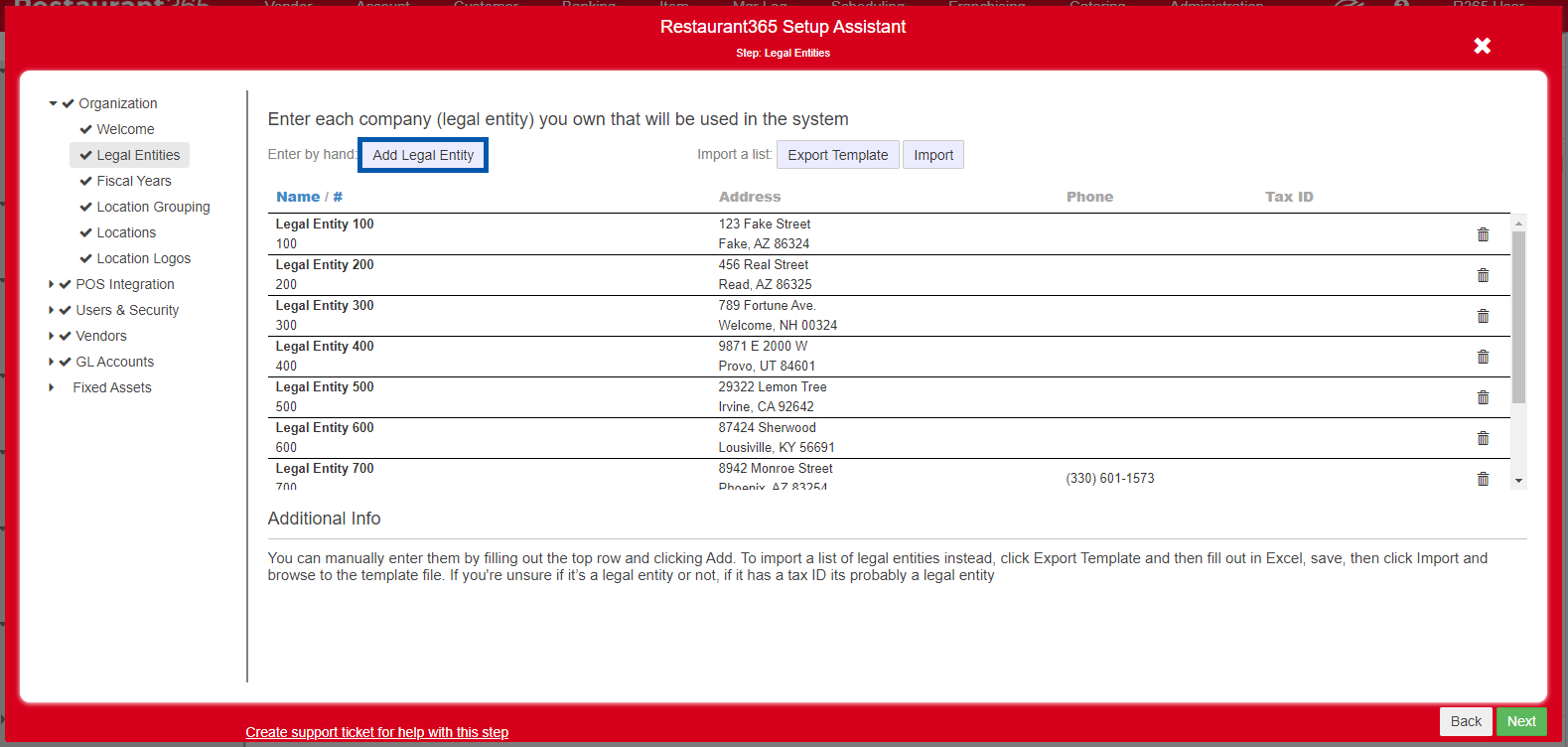
3) Assign the New Due To/From Account to the New Legal Entity.
Open the newly-created Legal Entity record and select the new Due To/From Account under the 'Intercompany' section. Ensure that this record is saved when completed.
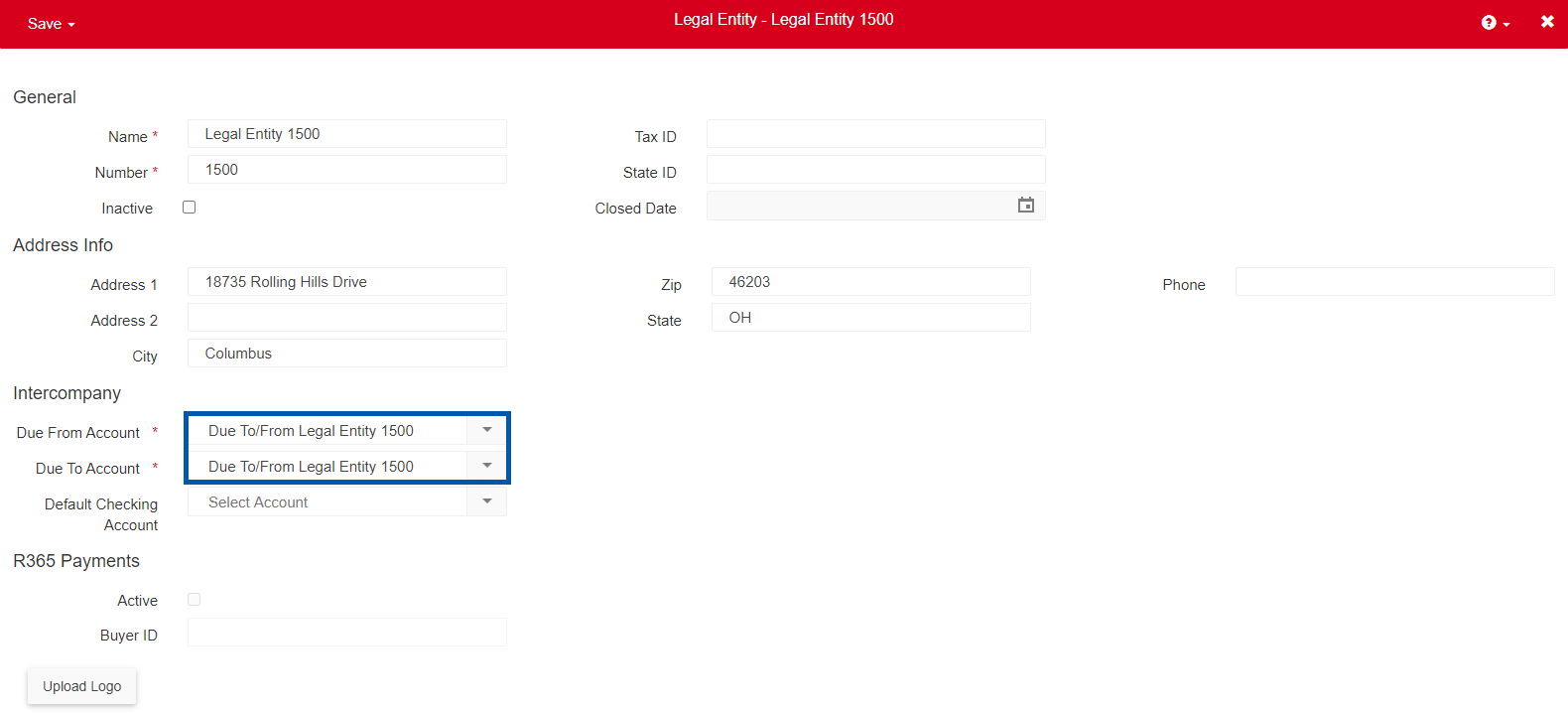
4) Add New Bank Accounts.
Create the new bank accounts that will be used in the connection with this legal entity.
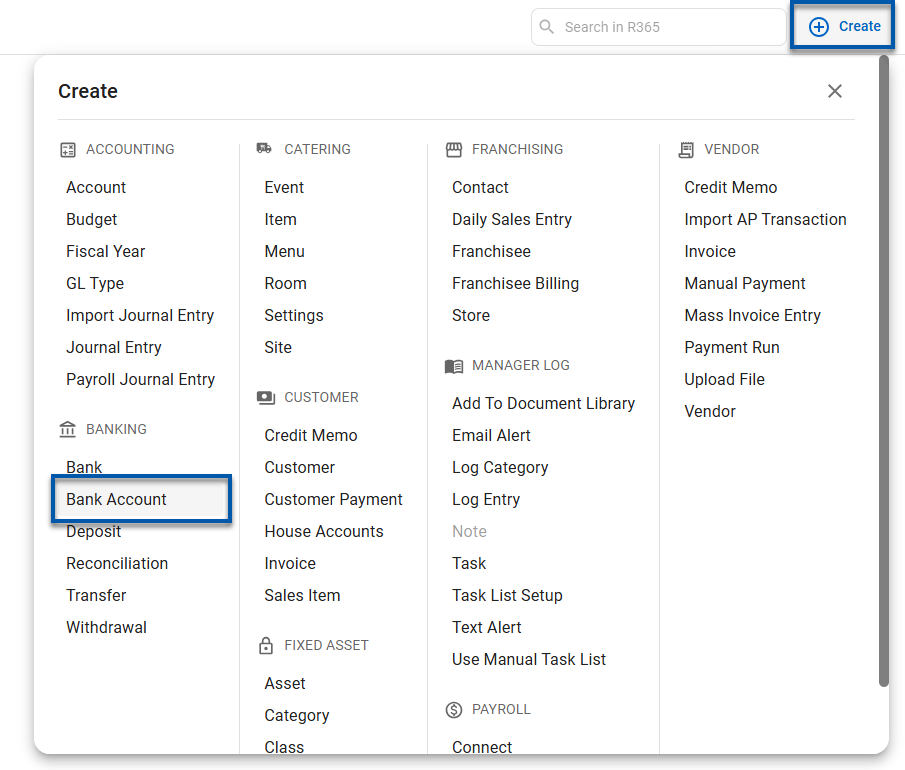
5) Create New Locations and Assign to the Correct Legal Entity.
Any Locations that are changing Legal Entities will need a new Location record created for them. To do so, navigate back to Setup Assistant so that new Locations can be created and tied to this Legal Entity. Open the Locations listing by clicking Locations under Organization and then the Add Location button.

On the 'Add New Location' modal, add '- New' to the end of the Location name and number. Assign the new Legal Entity to the Location and then save the record before creating additional Locations.
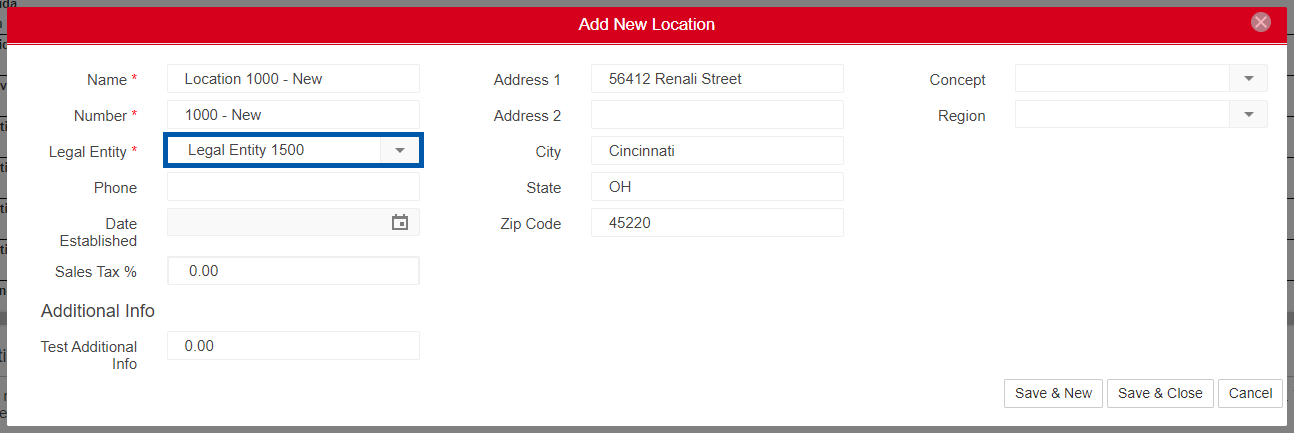
6) Assign Bank Accounts.
On each new Location record, navigate to the Default Accounts tab and update the Bank Accounts accordingly.

If the new locations are not listed, it is likely due to location access.
To update this, open the User record, navigate to the Locations tab, and either add the new Location(s) or toggle All Locations to gain access to all Locations.
Contact an admin within your organization for assistance.

7) Add Fiscal Years for the New Legal Entity.
Create a new Fiscal Year for this Legal Entity.
R365 Tip
To run year-over-year reports, the Fiscal Year should mirror the legacy Legal Entity's Fiscal Year; if not, any Fiscal Year setup can be entered.
As a reminder, the Fixed Asset module is not supported by custom Fiscal Years.
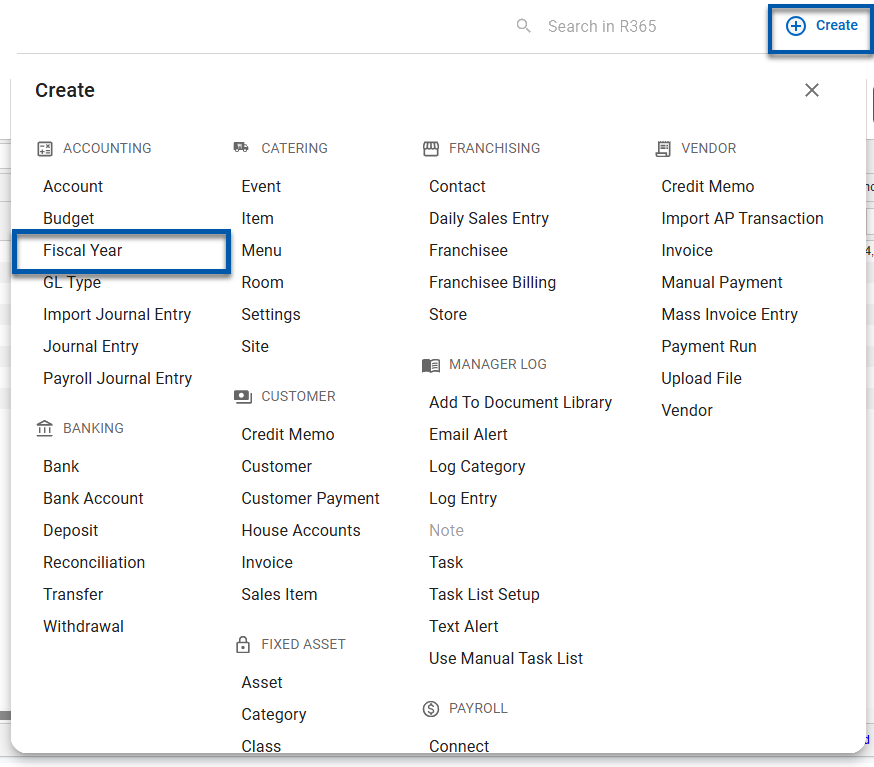
When done, ensure that the update is saved.
Steps to Complete at Year's End
Once all transactions have been reviewed and Approved at year's end, complete the steps below to adjust the new and legacy Legal Entity and Location records moving into a new Fiscal Year:
Click steps to expand for additional information and images.
1) Update All Legacy and Current Location Names.
Update all legacy Location names to include '- Old' in the name and number. Save and close each record.

Then, navigate to all new Location names and remove '- New' from the Location name and number. Save and close each record.
2) Submit Support Tickets.
Submit two Support Tickets to R365 Support in regards to the following:
POS Integrations. The first ticket should inform them of the changes made and ask them to have the POS Integrations sent to the new Locations rather than the legacy Locations.
Vendor Integrations. The second ticket should include the names of all Vendors that you would like to have integrated with these Legal Entities. Click here for more details on Vendor integration.
3) Import Historical Sales for New Locations.
Export the Daily Sales Summary List View for all Legacy Locations to create a Historical Sales Import for the Current Locations.
To do so, open the Daily Sales Summary listing and filter by Location. Then, click the export button in the top, right corner above the listing to download and save an Excel file of all DSSs. Repeat this process for each legacy Location.
Once all files are saved, import these files as Historical Sales for each new Location. Learn more about how to import Historical Sales.

4) Import Open AP/AR Transactions.
Run the AP Aging and AR Aging Reports for all legacy Legal Entities. Export each report to Excel and then copy and paste over each transaction in their respective AP/AR Templates, which can be downloaded from the Import Tool. Once all transactions are entered on the correct template, import each template via the Import Tool.
5) Transfer GL Beginning Balances.
Once the audit at year's end is complete, review Intercompany entries to ensure that they are mapped to the correct Due To/From Account and then transfer GL Beginning Balances from the legacy Locations to the new Locations.
6) Deactivate Legacy Legal Entities.
The last step is to deactivate the legacy Legal Entities so as to avoid posting new transactions to the old Locations.
To do so, open each Legal Entity and check the 'Inactive' checkbox. Ensure that the record is saved before updating another record.
